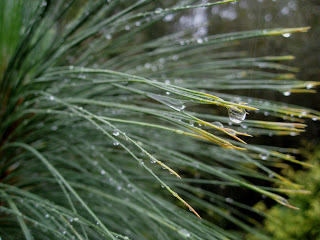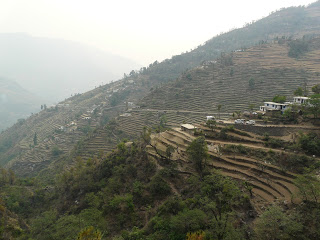Protecting Your Garden From Overwatering
 |
| By brewbooks |
There’s no denying the past few years of drought have been rough on farmers and gardeners alike. After so many poor seasons in a row, the heavy rain we’ve been having was breathing new life into the fields. In Michigan, we had over a week of daily rain. Our thanks (and funky rain dances) quickly turned sour as some of our friends’ gardens were flooded, sometimes for days, ruining whole sections of carefully tended plants. In our discussion of plans for next year we went over a few ideas to hopefully prevent this in the future.
Widget not in any sidebars
Raised Beds
Always a personal favorite, raised beds create the perfect opportunity to tailor your garden specifically to your climate and landscape. One of the best methods of raised bed gardening revisits our old friend, hugelkultur, or mound gardening. While hugelkultur beds can be created by digging and laying logs or wood chips below the surface, generally the soil is piled on top of the wood, creating an effective raised bed. This allows the water to run downhill while the underlying wood aids in preventing erosion, and at the same time traps water near the roots of the plants for later use. Even building garden boxes allows for more effective use of natural water, without drowning your plants in natural low areas where the water has no means of escape.
Location, Location, Location
 Careful planning is what natural gardening is all about. Using the lay of the land and planning your garden accordingly can save a multitude of headaches in the future. If your yard presents natural hillsides, use these to your advantage. Planting on top of a hill can expose your garden to wind damage, lack of water, and soil erosion. Plant too low and you might find yourself with a pleasant amphibian pond. Utilizing the hillside is generally the best way to ensure good growth. A gentle slope facing solar south will ensure your future food gets plenty of sunlight, downhill runoff and protection from wind and flooding. Of course, the natural layout of your property won’t always be perfect. Perhaps the hills are too steep, or non existent. There are still options.
Careful planning is what natural gardening is all about. Using the lay of the land and planning your garden accordingly can save a multitude of headaches in the future. If your yard presents natural hillsides, use these to your advantage. Planting on top of a hill can expose your garden to wind damage, lack of water, and soil erosion. Plant too low and you might find yourself with a pleasant amphibian pond. Utilizing the hillside is generally the best way to ensure good growth. A gentle slope facing solar south will ensure your future food gets plenty of sunlight, downhill runoff and protection from wind and flooding. Of course, the natural layout of your property won’t always be perfect. Perhaps the hills are too steep, or non existent. There are still options.
Terracing
This nifty concept has been in practice for hundreds, if not thousands of years. A simple search for ‘terrace farming’ will turn up amazing photographs of farms all over the world carved into mountains and hillsides. In areas where most of us would be afraid to walk (OK, mostly me…I don’t get along with heights) farmers are managing to sustain successful yields by simply modifying certain aspects of the terrain. Terracing and contour farming are excellent for preserving nutrients in the soil, and allowing planting on areas that would otherwise be too difficult to work. Obviously most of us will be operating on a much smaller scale the the image below, but the effectiveness would be the same.
 |
| Yeah…No Thanks. |
Mulch
Placing mulch in your garden has a variety of benefits, from the moisture-saving layers of a hugelkultur bed to displacing weeds and certain types of insects. A light mulch layer has the added benefit of protecting the soil from heavy rains. Plants that are just beginning to break the surface can be hammered and washed away by an over-enthusiastic cloudburst. Laying some mulch may give the plants the initial protection they need until their roots are strong enough to hold them in place.
Trenches
And ponds. Creating a system of drainage ditches can work both by directing water to the areas of your garden that need it, and draining excess water away from areas that tend to pool.
Widget not in any sidebars
Greenhouses
Create the perfect micro ecosystem in the safety of your own backyard. Well, maybe not perfect, but once set up, a greenhouse can be a cozy little maternity ward for your sprouts. Temperature-controlled, enclosed , insect-repelling…OK, maybe it is almost perfect. But we don’t all have the space or the money for a greenhouse in the backyard, so planning your garden topography in advance might be the way to go if excessive puddle accumulation has you down. Don’t know where to dig? You might want to consider enlisting the help of a permaculture design expert, or even spending a few hours asking around your local farmers’ market. The odds of finding someone with similar experience will be a lot higher in your local area and you might just find someone willing to help you design a plot that’s just right for your needs.
Jonathan Parker is an EMT-Paramedic and Preparedness Instructor with a love for emergency medicine, self-sufficiency and homesteading. His goal is to empower people towards a natural and sustainable lifestyle.



